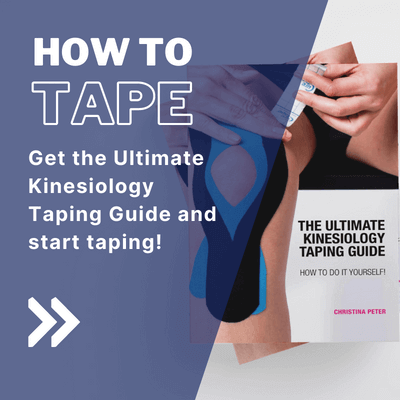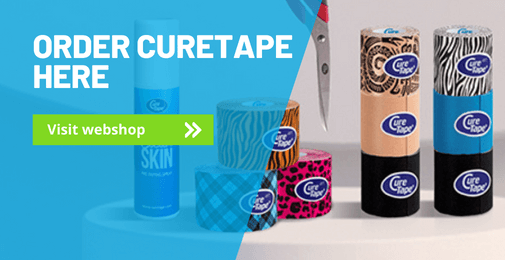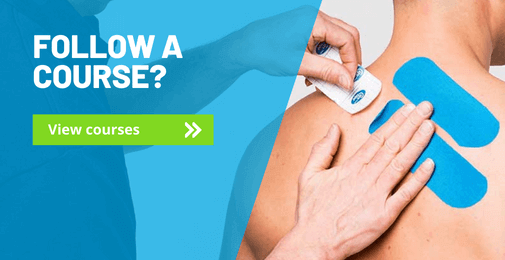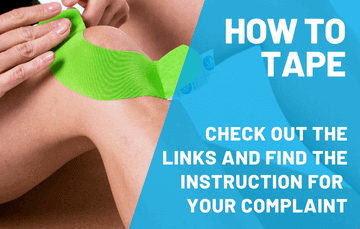A “texting thumb” (De Quervain’s tenosynovitis) is often caused by overburdening of the wrist. Swelling of the tendon sheath may lead to “constriction” in the first extensor tendon sheath and cause pain in the thumb joint that may radiate into the forearm. This pain usually occurs on exertion or when the thumb is spread out. The tape can help as a support to relieve the tendon and thumb movements. In the event of complaints, please also consult a doctor or therapist. The tape can also help with a general overuse injury of the thumb joint, or as a result of osteoarthritis of the thumb.
How to tape a painful thumb
Tips for a good hand taping application:
- Is the cause of the complaint or pain clear?
- Check if there any contraindications for not taping.
- Before you start taping, carefully read the instructions.
- Choose a colour of tape, any colour that fits your mood!
- Round of all the edges to prevent peeling.
- Do not stretch the tape at the beginning and the end.
- Rub the tape well for adhesion. Heat activates the adhesive layer.
- Showering or swimming is possible, pat the tape dry after it gets wet. Do not rub it hard.
- It is easier to remove the tape with body or massage oil.

Christina’s advice when taping your hip
In the self-taping instructions, I have chosen taping applications that are easy to apply yourself. In order to make this treatment safe, I give practical tips, which you should take into account before, during and after a tape treatment. They are based on my years of practical experience. If the complaints persist, always consult a therapist or doctor.
INSTRUCTION
Tape
Shape:Y-Tape.
Number of strips: 2.
Technique: muscle technique (slight pull).
Measuring and cutting the tape
Step 1:

- Sit at a table and measure two tapes from the thumb to the middle of the forearm..
- Cut the tape at one end to create a Y-tape that fits around the thumb.
Applying the tape
Step 1:

Step 2:
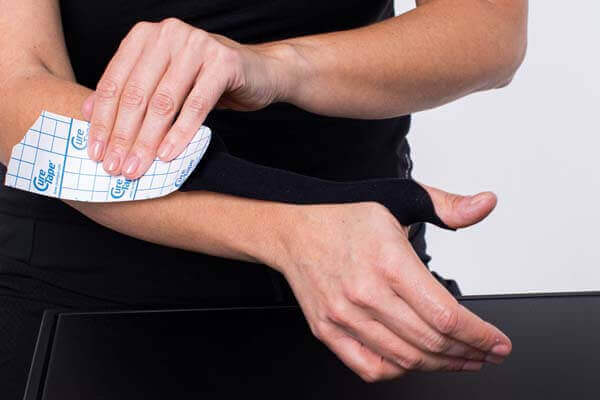
Step 3:

Step 4:
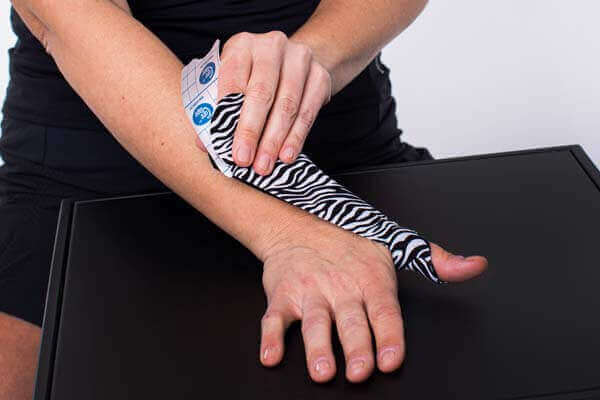
Step 5:
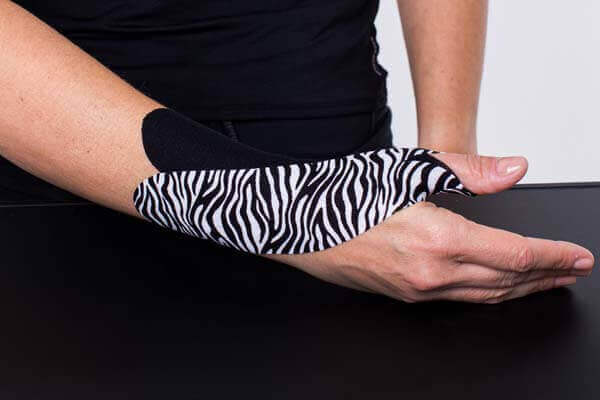
Step 6:

- First apply both sides of the Y-tape and end with a slight stretch around the thumb. Rub them into place.
- After you have fixed the base, spread the thumb a little and apply the tape with a slight stretch over the root of the thumb and over the wrist in an extension of the thumb.
- Rub the tape well to improve adhesion.
- Repeat the application technique with the second tape, guiding the tape diagonally from the first tape, across the back of the hand to the forearm.
Popular products to tape your foot
-
MYCureTape® – 3 Rolls Kinesiology Tape – Value Pack
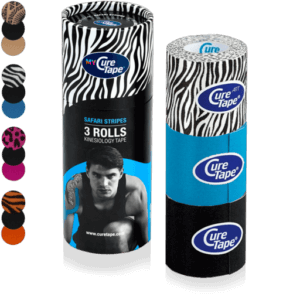 $26.95
In stockSelect options This product has multiple variants. The options may be chosen on the product page
$26.95
In stockSelect options This product has multiple variants. The options may be chosen on the product page -
Book: The Ultimate Kinesiology Taping Guide
 $29.95
In stockAdd to cart
$29.95
In stockAdd to cart -
CureTape® Ultimate Self-Tape Starter Kit
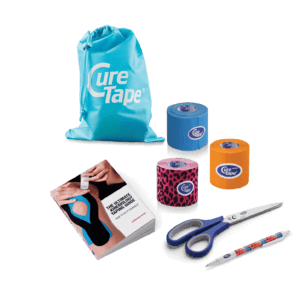 $87.95
In stockAdd to cart
$87.95
In stockAdd to cart
Learn how to tape
- 30 taping instructions for common injuries that taping can help you with
- 176 pages of clear written instructions
- 200 step-by-step instructions accompanied by photo’s, illustrations and scannable video’s through QR codes
What are you waiting for? Order your copy today!
*This book is intended for people who want to tape an injury or complaint themselves. If uncertain about the complaint, consult a physiotherapist.
THYSOL is the manufacturer of the kinesiology tape brand CureTape. As CureTape, we have been training and supplying professionals for almost 25 years. And consumers now know how to find us too! By manufacturing all our tapes in our own factory, we can guarantee the best quality!
Please note that the indicated tape applications and information on our website about the possibilities with kinesiology tape have not yet been scientifically proven. The statements and examples mentioned are based on long-term experiences of patients and trained therapists.
Contraindications not to tape: pregnancy, open wounds, broken bones, unexplained complaints, allergies and skin diseases, use of medication such as blood thinners, thrombosis and fever. Always apply tape in consultation with a specialist.


